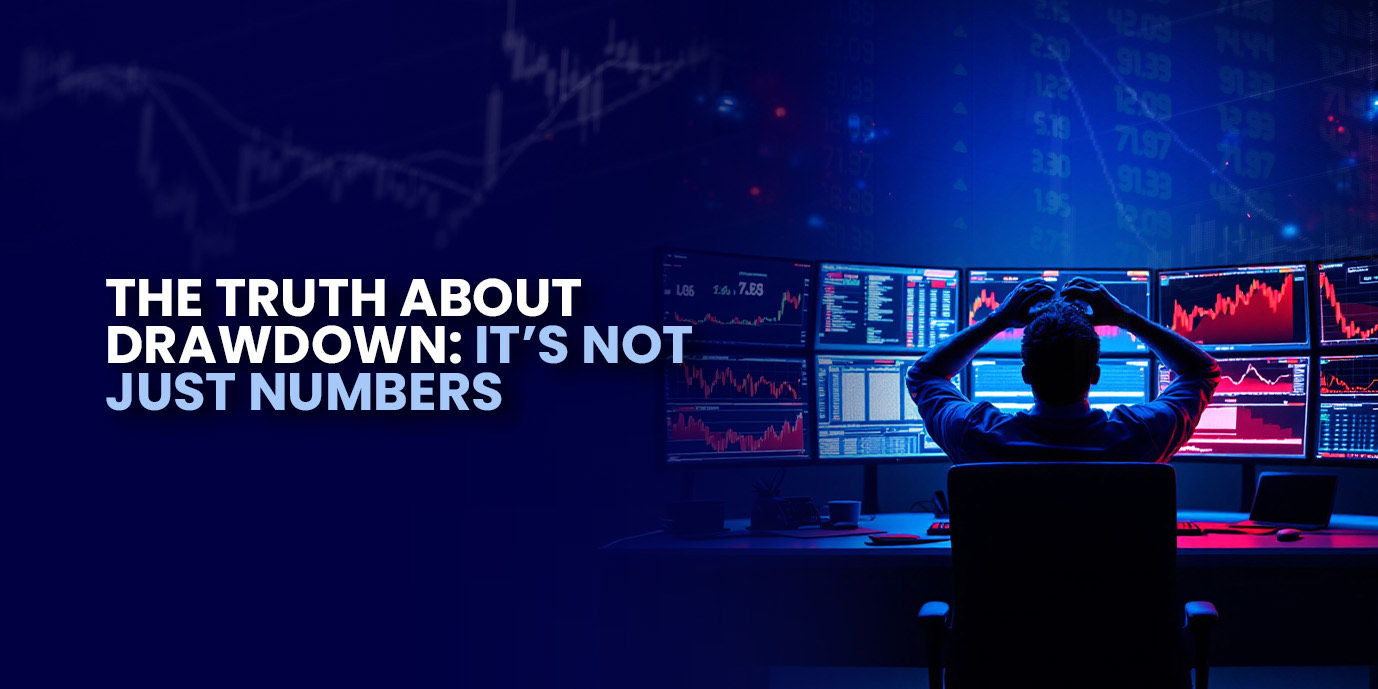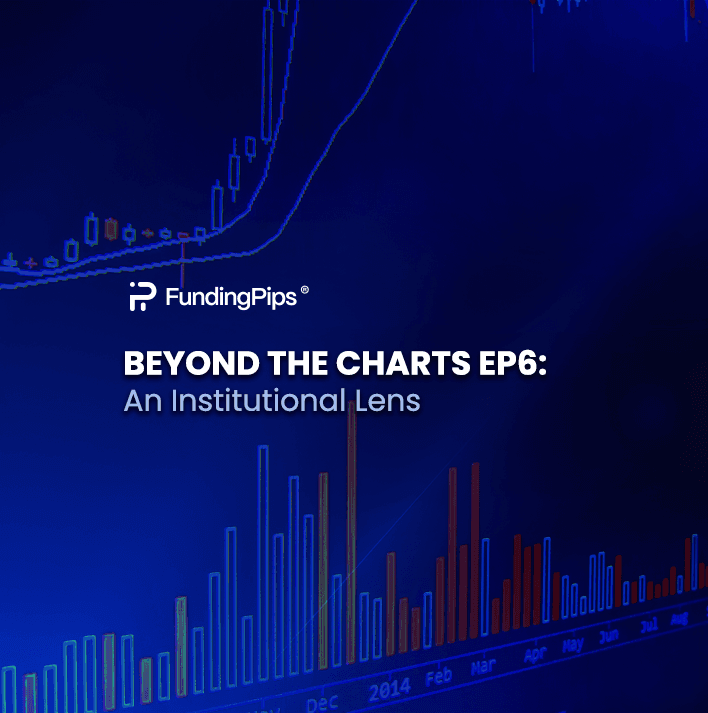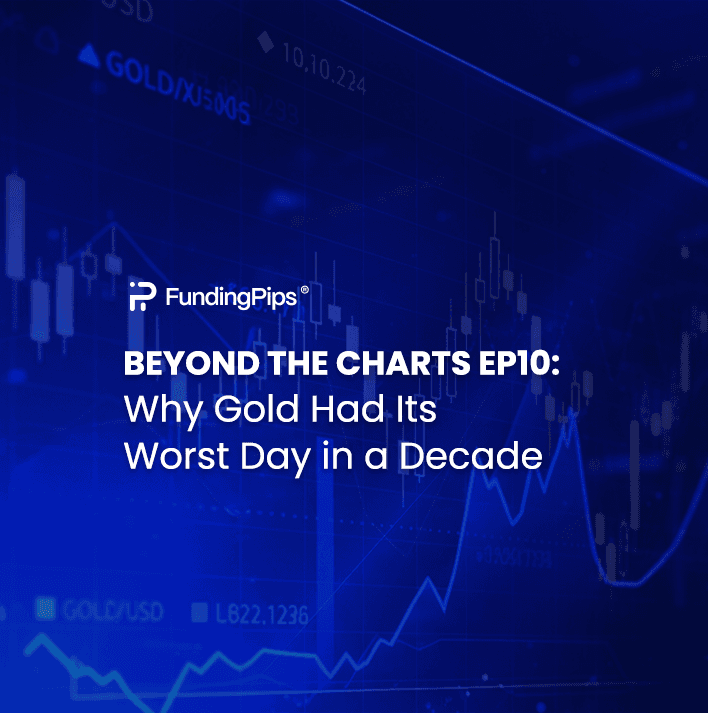How to Mentally Navigate Drawdown Without Losing Yourself
4/25/2025, 8:48:34 AM
Drawdown isn't just a dip in your equity curve, it's a psychological storm that, if misunderstood, can erode your confidence faster than your capital. While many traders obsess over their trading systems, it's the emotional system that usually breaks first.
Let’s go beyond the charts and look at what drawdown really reveals about you and how to use it to your advantage.

The Truth About Drawdown: It’s Not Just Numbers
Most traders see drawdown as a technical issue. “My edge failed.” “The market changed.” “News messed it up.”
But 80-90% of the time, the problem isn’t technical. It’s psychological.
Drawdown feels like personal failure. You don’t just lose trades - you lose face. You lose your sense of control. And often, you lose the ability to think clearly. Why? Because drawdown triggers the exact part of the brain associated with rejection. That’s right: your brain treats a losing streak like being dumped.
What follows is an avalanche of mental noise:
“Am I even a good trader?”
“Maybe I’m not cut out for this.”
“I need to make it back — now.”
“Why can others pass and I can’t?”
“I should be further ahead.”
This isn’t trading. This is emotional survival mode.
When Traders Create Their Own Drawdown

Here’s a hard truth, some of you traders, if not most, subconsciously put yourselves in drawdown.
Why? Because you only feel “on” when your back is against the wall. You’re wired for pressure. You perform under chaos because you’ve trained your nervous system to only respond when the stakes feel critical.
This leads to dangerous cycles:
You win → feel uncomfortable → overtrade → sabotage → back in drawdown → now you’re focused.
Rinse. Repeat.
Drawdown becomes your comfort zone. Your emotional home. Because you don't know how to function in peace only in panic.
Emotional Drawdown vs. Technical Drawdown: Know the Difference
There’s a critical distinction every trader must learn:
Technical Drawdown: Part of your edge. A statistical inevitability. No emotion needed - just follow the plan.
Emotional Drawdown: Self-inflicted. Driven by overtrading, FOMO, revenge trading, inconsistent sizing, or strategy hopping.
If you're spiraling emotionally, you're not just in drawdown - you're in emotional regression. And that needs a different kind of recovery plan.
The Cortisol Trap: Why Your Logic Dies in Drawdown
A study published in the Journal of Behavioral Finance revealed that traders in drawdown experience heightened cortisol levels - the stress hormone. This suppresses executive function (your logical decision-making) and heightens emotional reactivity.
Translation? The more stressed you are, the worse your trading gets. You can’t “outwork” your way out of drawdown with logic when your biology is in chaos.
Recovery Must Match Your Personality Type

Not all recovery strategies work for everyone. Your comeback plan should align with how you emotionally respond to pressure.
Trader Type 1: The Reactive Trader
Impulsive. Overleveraged. Wants to fix it now.
🔁 Recovery Style: Minimal trades. One per day max. Cool-down rituals. Journaling. Walks between trades. Risk scaling down to 0.3 - 0.5%.
Trader Type 2: The Hesitant Trader
Frozen. Overthinks. Fails to pull the trigger.
🧠 Recovery Style: Pre-plan decision trees. Scenario-based entries. Use limit orders. Reduce decision-making pressure.
Whether you're reactive or reserved, the principle is the same: work with your psychology, not against it.
Identity Collapse: The Hidden Danger in Drawdown
When you’re deep in drawdown, the pain isn’t from the loss -nit’s from what the loss means about you.
If your self-worth is tied to your P&L, every trade becomes an emotional referendum on your identity. That’s a losing game.
Start rewarding yourself not for wins, but for executing your plan. Let the market judge your edge. You judge your discipline.
Tactical Recovery Plan for Drawdown
Here’s a simplified framework to mentally reset and rebuild from drawdown:
Interrupt the Pattern Walk away. Reset your state. Movement helps lower cortisol.
Label the Emotion Say it out loud: “I feel ashamed.” “I feel frustrated.” Naming the emotion cuts its intensity by nearly 50%.
Run Your Script Repeat: “Losses are part of my edge. My job is to execute my plan, not fix the market.”
Journal the Trigger, Not Just the Trade What did you feel before, during, and after? That’s your real edge.
Only Re-enter When Calm Ask: “Would I take this trade if I wasn’t in drawdown?” If not — don’t.
Your Job Isn’t to Avoid Drawdown. It’s to Manage It
This is your new identity:
“My job as a trader is not to avoid the drawdown. My job is to manage the drawdown like a professional.”
Calm. Clear. Controlled. That’s the mark of a consistent trader.
Before you rebuild your equity — rebuild your self-trust.
The Realest Perspective You’ll Hear Today
One of our traders said it best:
“I chose to pay for my education in the markets. Every loss is tuition. It’s my degree in mastery.”
Let that sink in. You’re not just trading setups. You’re building a system of belief, trust, emotional regulation, and personal evolution.

Drawdown doesn't mean you're broken. It means you're human. But trading success isn’t for the emotionally fragile — it’s for those who train their mind like their edge depends on it.
Because it does.
💬 What’s your biggest drawdown lesson? Share your insight in the comments section on YouTube under the Psychology Series Video.
🎥 Watch the full session on YouTube: “Trading Psychology Series: PSYCHOLOGY BEHIND MANAGING DRAWDOWN | VITAL KNOWLEDGE FOR TRADERS” 📲 Click here to watch the full session


